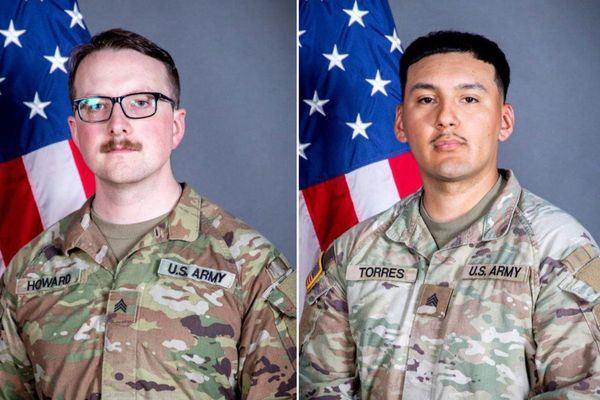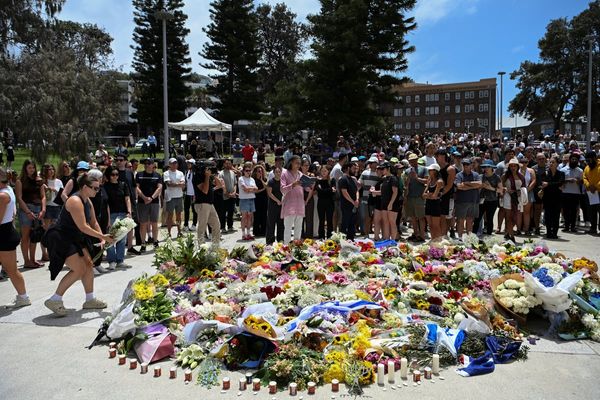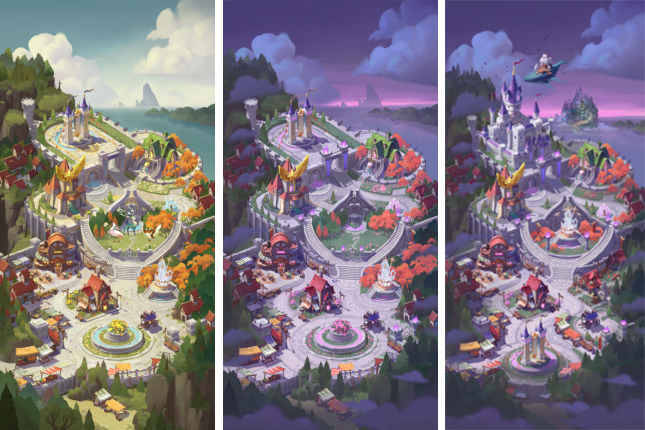
Finding a unique art style to bring a game to life isn't an easy task, but it's one dev studio Lilith Games has been excelling at for six years with its has game, AFK Arena. The game's painterly, illustrative aesthetic features bold lines and flat shading and in part is reminiscent of Art Nouveau.
AFK Arena is not the first game to draw inspiration from Art Nouveau, both Our Brilliant Ruin and Songs of Silence did something similar, but this Chinese game studio is one of the most popular.
Lilith Games has currently undertaken a global art contest in collaboration with XPPen – called Monsters Gone Wild – to challenge artists to redesign some of the game's popular characters and creatures. To help, visit Lilith Games' site for inspiration.
Maker of some of the best drawing tablets, XPPen put me in contact with Lilith Games' Chenrui ZENG, the lead environment artist on AFK Arena, to discover more about this team's creative process and the games he sees as "masterclasses in environmental storytelling".
Behind the scene art for AFK Arena
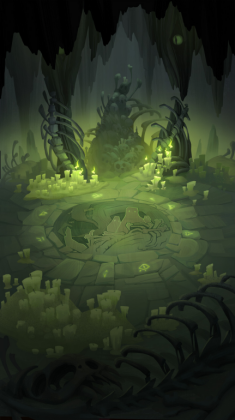
CB: how would you describe the studio's overall art style, and how do you contribute to maintaining it in your scene work?
Chenrui ZENG: The most recognizable aspect of AFK Arena’s art style is a combination of stained glass aesthetics and Art Nouveau influences, particularly inspired by Alphonse Mucha. However, the style of the scenes differs somewhat from the character illustrations. We intentionally distinguish the look and feel of the different environments from the artwork, and each continent in the game is designed with a distinct visual style.
To maintain visual consistency across the game while ensuring each scene feels unique, we start by considering the background stories and racial characteristics of each continent. For example, the various factions – the Lightbearers, Wilders, Maulers, and Graveborn – each have their own unique traits and colour schemes. Take the Graveborn, for instance, their primary tones are yellow and green, which we use as the dominant palette when designing their environments to convey their faction’s sense of mystery and gloom.
Additionally, the scene design evolves alongside the progression of the story. In the early stages of the game, the continents are darker and grander, reflecting the feeling of oppression and the player’s mission to fight and liberate the regions. As the narrative unfolds and new continents are discovered, the tone shifts toward adventure. This change is reflected in the scenes by introducing more fantastical elements, greater depth, and visually striking features. I also make sure to incorporate awe-inspiring landmarks or key moments in certain levels to captivate players’ attention and enhance their desire for exploration.
We aim to craft every scene with a balance of macro and micro-level details, allowing players to feel immersed in this fantasy world and engaged with our narrative. At the same time, we ensure that every environment plays its part in supporting the story progression while delivering a cohesive yet dynamic visual experience.
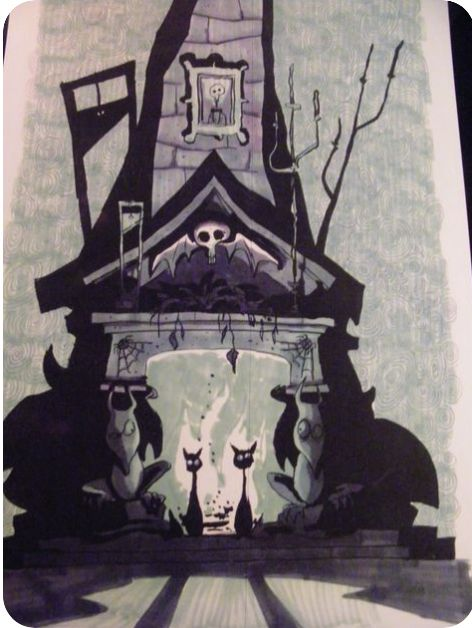
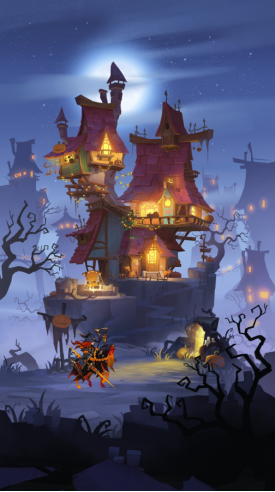
CB: What’s the creative process like for building a scene or concept art in AFK Arena, from concept to final in-game asset?
Chenrui: The creative process begins with the concept sketch phase. We start by reviewing the narrative brief and reference materials provided by our writers. Through collaborative brainstorming sessions, we distill the most promising visual elements based on our expertise. Initial rough sketches are then shared with the narrative team to ensure alignment with their vision and the game’s overarching aesthetic.
Next comes the design and refinement stage. Here, we focus on crafting architecture and props that resonate with the faction’s lore while enhancing visual storytelling. For instance, when developing a scene for an SP Mauler hero, we might create a desert-themed environment featuring rugged Mauler-style structures.
These are layered with details that echo the hero’s personality – think tribal motifs, battle – worn textures, or symbolic artefacts tied to their backstory. Every element undergoes iterative polishing to balance artistic flair with technical feasibility for in-game implementation. This structured yet flexible workflow allows us to merge narrative depth with striking visuals.
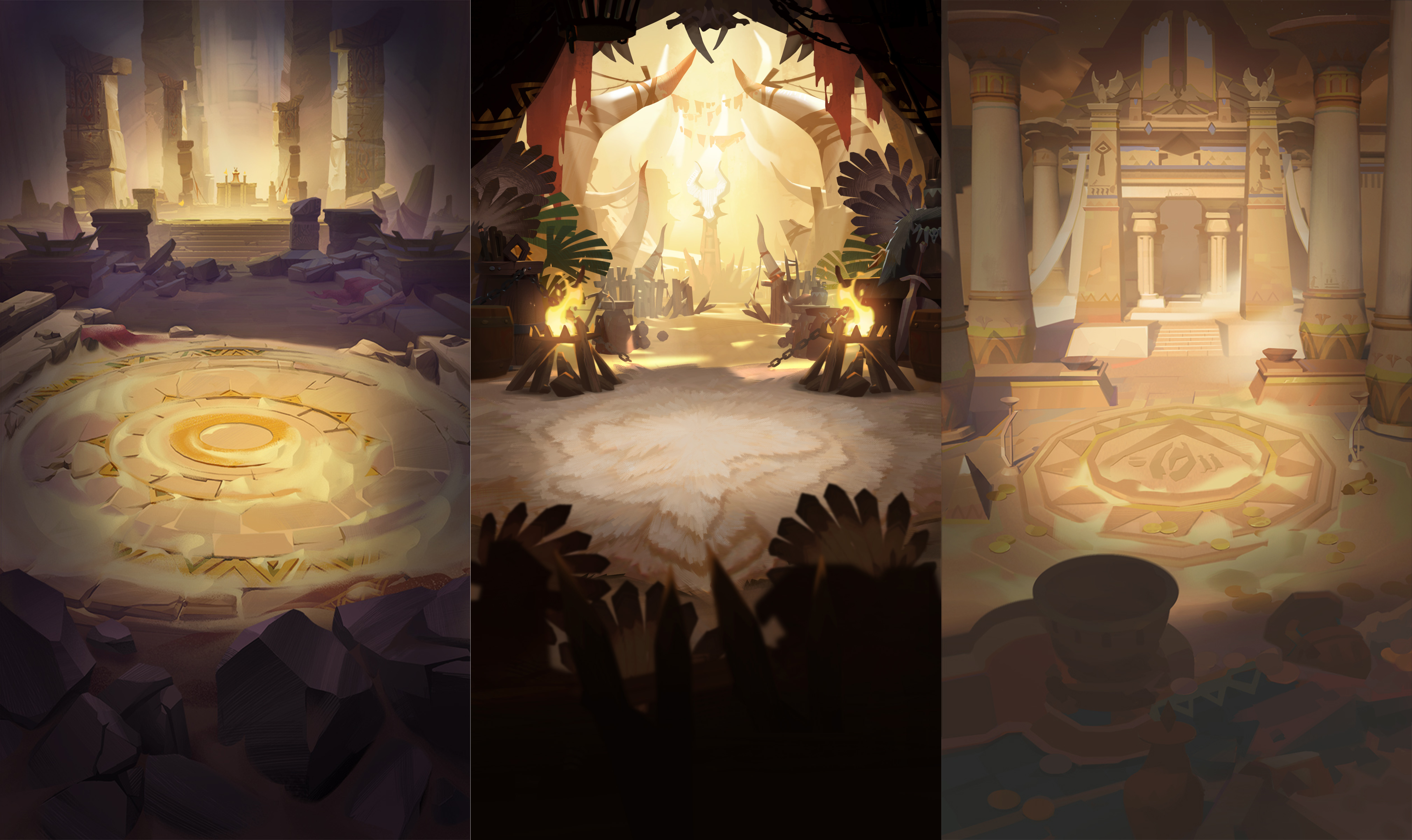
CB: What tools (tablet, etc) and software do you primarily use for creating your art, and why have those become your go-to choices?
Chenrui: My go-to choice is the XPPen Artist Pro 24 (Gen2) 4K. Its massive, high-definition display helps a lot for nailing fine details, and the color accuracy meets our specific demands. The 16K pressure levels and refined, responsive stylus feedback deliver a natural and fluid drawing experience. It’s basically an ideal choice that strikes the perfect balance between both efficiency and quality. And last but not least, Photoshop remains our software of choice.
CB: AFK Arena often blends fantasy, elegance and whimsy in its visuals, how do you balance artistic freedom with staying true to the game's aesthetic?
Chenrui: Our game’s world-building is expansive. While geographical constraints exist in the lore, they don’t stifle creativity, they actually fuel it by providing a structured canvas. To balance artistic freedom with the game's aesthetic, I start by deeply understanding the game’s core identity. I adhere to established visual rules while weaving in my own creative interpretations.
Take the 2023 Halloween event scene, for example. I drew inspiration from Tim Burton’s style. The challenge was to meet the event’s playful requirements while aligning with AFK Arena’s overall vibe. I went wild with warped houses, gnarled trees, and jagged shapes – elements that captured the holiday’s quirky charm while creating a brooding atmosphere. The result? A composition blending eerie distortion with subtle warmth.
For me, balancing artistic freedom and artistic consistency is a dynamic, ongoing exploration. Through constant practice and reflection, I aim to preserve the game’s cohesive style while injecting fresh creativity and emotion into every piece. Ultimately, it’s about giving players a world that feels both familiar and thrillingly inventive.
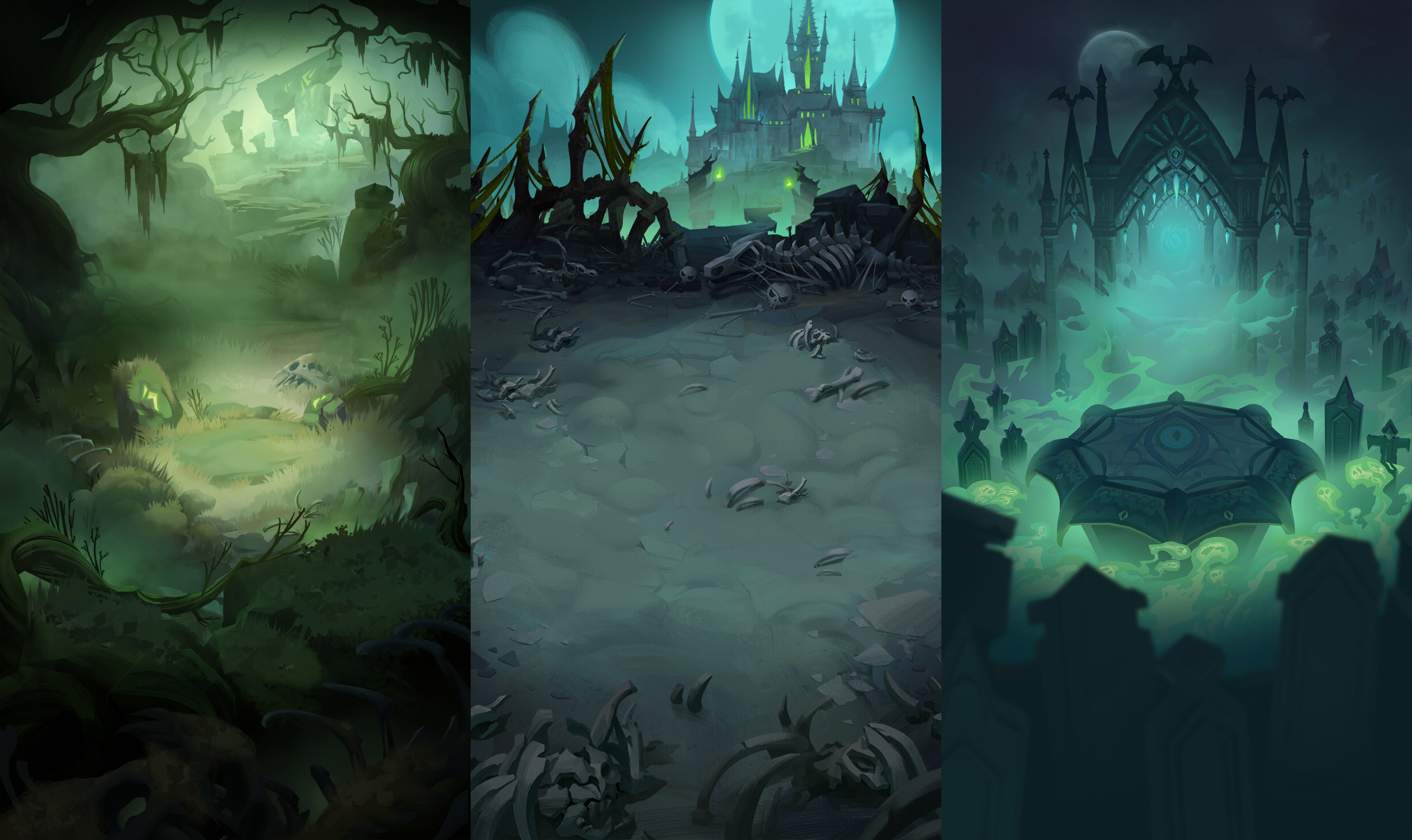
CB: How do you collaborate with other departments like design, narrative or animation to bring a scene to life?
Chenrui: When tackling animation-driven requests, we start by syncing closely with the design team to nail down their vision for the desired effect. After drafting rough sketches, we loop in animators and VFX specialists early to brainstorm solutions, assess technical feasibility, and lock down realistic timelines, all while keeping creative intent front and centre. Feedback from these sessions shapes iterative refinements until everyone’s aligned.
Collaboration here isn’t about compromise, it’s a lively back-and-forth, and this process is about merging disciplines to build a world that breathes – where art, motion and story feel inseparable to players.

CB: What has been your favorite scene or environment you’ve worked on for AFK Arena so far, and what made it special to you?
Chenrui: One of my favorite scenes I worked on for AFK Arena was the Halloween event environment in 2021, it was the first major game update I worked on after joining the AFK Arena team. While it may not be my best work in terms of artistic quality, it holds significant meaning for me.
I was thrown into the deep end: tight deadlines, high stakes, and navigating the project’s workflow for the first time. That pressure cooker environment taught me how to collaborate effectively and communicate across teams. That experience sharpened skills I still rely on daily.
Since then, I've been responsible for designing the Halloween scenes every year, and with each iteration, I’ve become more comfortable and confident in my work, allowing me to explore more creative designs. Those annual scenes are like a personal growth chart, and I can see how my understanding of the game’s aesthetic deepened while still sneaking in playful experiments.
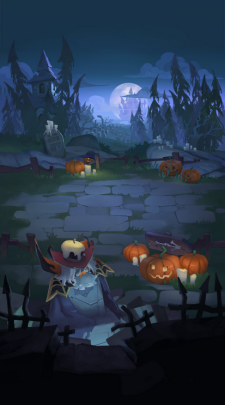
CB: How do you keep your skills sharp and stay inspired while working on a long-running title like AFK Arena?
Chenrui: I fuel my creativity by regularly diving into narrative-driven single-player games– God of War Ragnarök, Shadow of the Colossus, Uncharted, The Last of Us, Red Dead Redemption 2… These worlds are masterclasses in environmental storytelling.
When I’m moved by a scene’s emotional gravity or a clever lighting trick in game, I dissect how it works, and then strive to channel that same emotional resonance into our work.
Lately, I’ve been hooked on Stardew Valley. Its magic lies in proving how deceptively simple pixel art can house such rich storytelling, and I think it is a humbling reminder that technical polish isn’t everything.
Sometimes I wander cities with my phone camera, snapping photos of mundane moments like rain pooling in a cracked sidewalk or rust patterns on a drainpipe. Nature inspires me the most, with different colours in different weather, and every corner holds a story I couldn’t have invented alone.
Visit the XPPen AFK Arena 'Monsters Gone Wild!' site for details on how to enter the art challenge.


